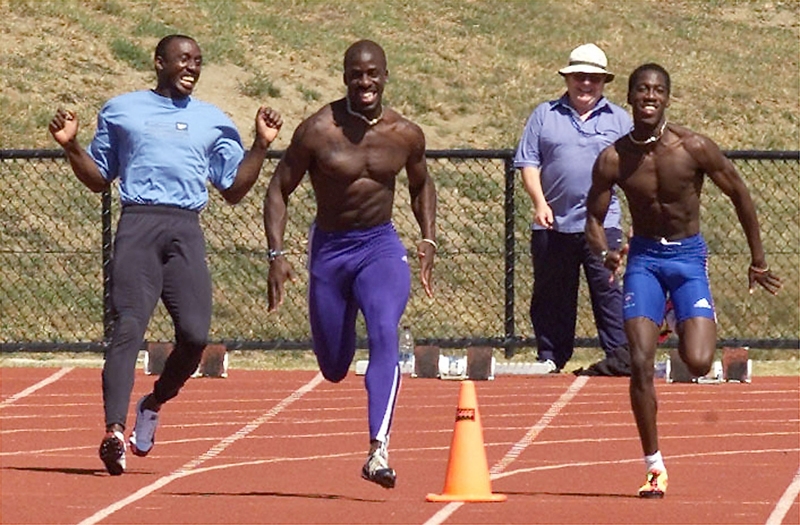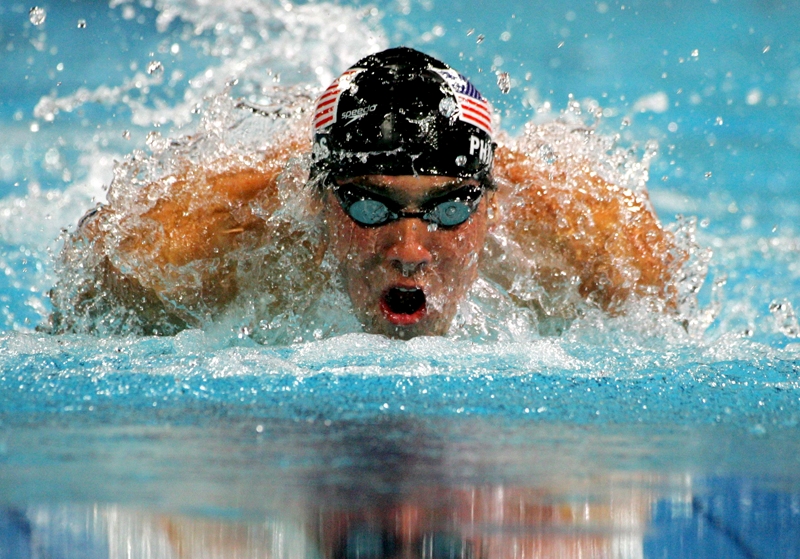You are viewing 1 of your 1 free articles. For unlimited access take a risk-free trial
Cut it out: does radically cutting training time always harm performance?

Can you radically reduce your training volume yet still maintain your performance? Andrew Hamilton looks at the science, which suggests high-intensity intervals could be the key...
Regular Sports Performance Bulletin readers will be more than aware of the huge amount of recent research into using high-intensity interval training as a method of improving fitness. The reason is simple; a growing number of studies have shown that short sessions of high-intensity intervals can produce significant fitness gains in less time and with less effort than traditional longer duration intervals. What’s more, these gains aren’t just limited to sprint or flat-out anaerobic performance, because research shows that endurance athletes who want to simply improve their aerobic fitness in order to become faster over longer distances can also benefit from short periods of, high-intensity interval training. Even better, the benefits of high-intensity interval training can be realised by all sportsmen and women – not just elite athletes. Indeed, recreational athletes who introduce intense intervals to a training schedule stand to gain even more than more advanced level athletes (who will almost certainly already be utilizing interval training in their training programs).How to use intervals in your program
Despite these findings however, there are still a number of questions about how best to integrate high-intensity intervals into a longer-term training program. Many endurance athletes typically employ short blocks of high-intensity training to supplement their regular distance training work. Shorter-distance athletes and team athletes such as soccer and basketball players are likely to employ regular interval sessions, interspersed with some blocks of endurance training.In terms of time requirements, the use of high-intensity intervals is very attractive, yielding good aerobic fitness gains per unit time of investment. Longer-duration, steady state aerobic training (eg running at constant sub-maximal pace) by contrast yields less gains per unit of time invested, but is considered an essential building block for maintaining aerobic fitness in the longer term. This begs the question: what happens if you were to radically reduce your steady-state, moderate-intensity training volume, and instead switch to high-intensity interval training for an extended period of time? How would your aerobic fitness and performance hold up over time, even though your time invested in training dropped considerably?
Research from swimmers
There’s very little data with which to answer this question – perhaps not surprising as most sportsmen and women prefer to stick with tried and tested programs, especially during their competitive season! However, one study on elite swimmers provides some valuable insight(1). In this study, 41 swimmers were studied over a 12-week period in their competitive mid-season. The swimmers were randomly assigned to one to two training groups:- High-intensity interval protocol (20 swimmers) – in this group, regular the swimmers’ training volume was reduced by 50% and the amount of high intensity training they performed was much higher, amounting to five hours per week. The intervals were performed as six to ten intervals of 10-30 seconds duration, each interspersed by 2–4 minutes of rest. The total distance covered by this group was 17km per week.
- Control group (21 swimmers)- in this group, the swimmers maintained their existing swimming training programme. This group covered a total of 35km per week but within this, they performed just 1 hour per week of high-intensity intervals – one fifth that of the high-intensity group.
The first key finding was that performance in the 100m and 200m freestyle timed swims after 12 weeks was no different between the two training groups. Also, the average speed of a 200m freestyle swim performed after four preceding 200m swims with increasing speed was similar between the two groups (see figure 1). When it came to measures of fitness such as maximum oxygen uptake and muscle efficiency, once again, there was no difference between the two groups. In fact the only significant difference was that in the control group, there was a slight gain in body fat compared to the high-intensity interval group.
Figure 1: 200m swim times

200 m freestyle times in a competition setting, starting from blocks in heats of 3–4 swimmers, before (PRE) and after (POST) a training intervention. One group performed usual swim-training (CON) and another group reduced their training volume by 50% and more than doubled the amount of high-intensity training (HIT).
Practical implications for athletes
This study is interesting because it’s longest-running high-intensity interval training intervention using elite-athletes and it included more subjects than most previous studies. The findings that reducing training volume by over 50% and upping the amount of high intensity intervals maintained the swimmers’ fitness levels is important; in elite swimming, the need to focus on the technical and tactical aspects of the sport means that training time can be limited. This study shows that switching to a high-intensity interval program could free up time for this kind of work without fitness losses. And given the underlying physiological demands, there’s no reason to think that this would not also apply to other athletes who compete at high intensities but whose sports also require extensive skills training.There is also another potential benefit to athletes who switch to reduced-volume, high-intensity interval based training; using the same protocol as in the above study (halving training volume by using high-intensity intervals), scientists have also demonstrated that increasing training intensity and reducing training volume for 12 weeks can reduce general stress and increase overall recovery levels in competitive swimmers (and by implication, other athletes too)(2).
One possible question however is this: if high intensity intervals are so effective at building fitness, why wasn’t the high-intensity trained group fitter and faster after 12 weeks than the control group? After all, this has been shown to be the case in recreational runners(3,4). It’s also been shown that in athletes that have not previously engaged in high-intensity intervals training, performance can be improved by reducing overall volume and adding in intervals(5). The most likely explanation is that because the swimmers had been performing high intensity intervals for a number of years as a part of their regular training, an upper limit may exist to the amount of interval training that can be performed while still yielding performance enhancement.
References
- PLoS One. 2014 Apr 15;9(4):e95025
- Eur J Sport Sci. 2016;16(3):344-9
- J Sci Med Sport 2007; 10: 27–35
- Am J Physiol Regul Integr Comp Physiol 2008; 294: R966–R974
- Scand J Med Sci Sports 2010; 20 Suppl 2: 1–10
Newsletter Sign Up
Testimonials
Dr. Alexandra Fandetti-Robin, Back & Body Chiropractic
Elspeth Cowell MSCh DpodM SRCh HCPC reg
William Hunter, Nuffield Health
Newsletter Sign Up
Coaches Testimonials
Dr. Alexandra Fandetti-Robin, Back & Body Chiropractic
Elspeth Cowell MSCh DpodM SRCh HCPC reg
William Hunter, Nuffield Health
Keep up with latest sports science research and apply it to maximize performance
Today you have the chance to join a group of athletes, and sports coaches/trainers who all have something special in common...
They use the latest research to improve performance for themselves and their clients - both athletes and sports teams - with help from global specialists in the fields of sports science, sports medicine and sports psychology.
They do this by reading Sports Performance Bulletin, an easy-to-digest but serious-minded journal dedicated to high performance sports. SPB offers a wealth of information and insight into the latest research, in an easily-accessible and understood format, along with a wealth of practical recommendations.
*includes 3 coaching manuals
Get Inspired
All the latest techniques and approaches
Sports Performance Bulletin helps dedicated endurance athletes improve their performance. Sense-checking the latest sports science research, and sourcing evidence and case studies to support findings, Sports Performance Bulletin turns proven insights into easily digestible practical advice. Supporting athletes, coaches and professionals who wish to ensure their guidance and programmes are kept right up to date and based on credible science.













